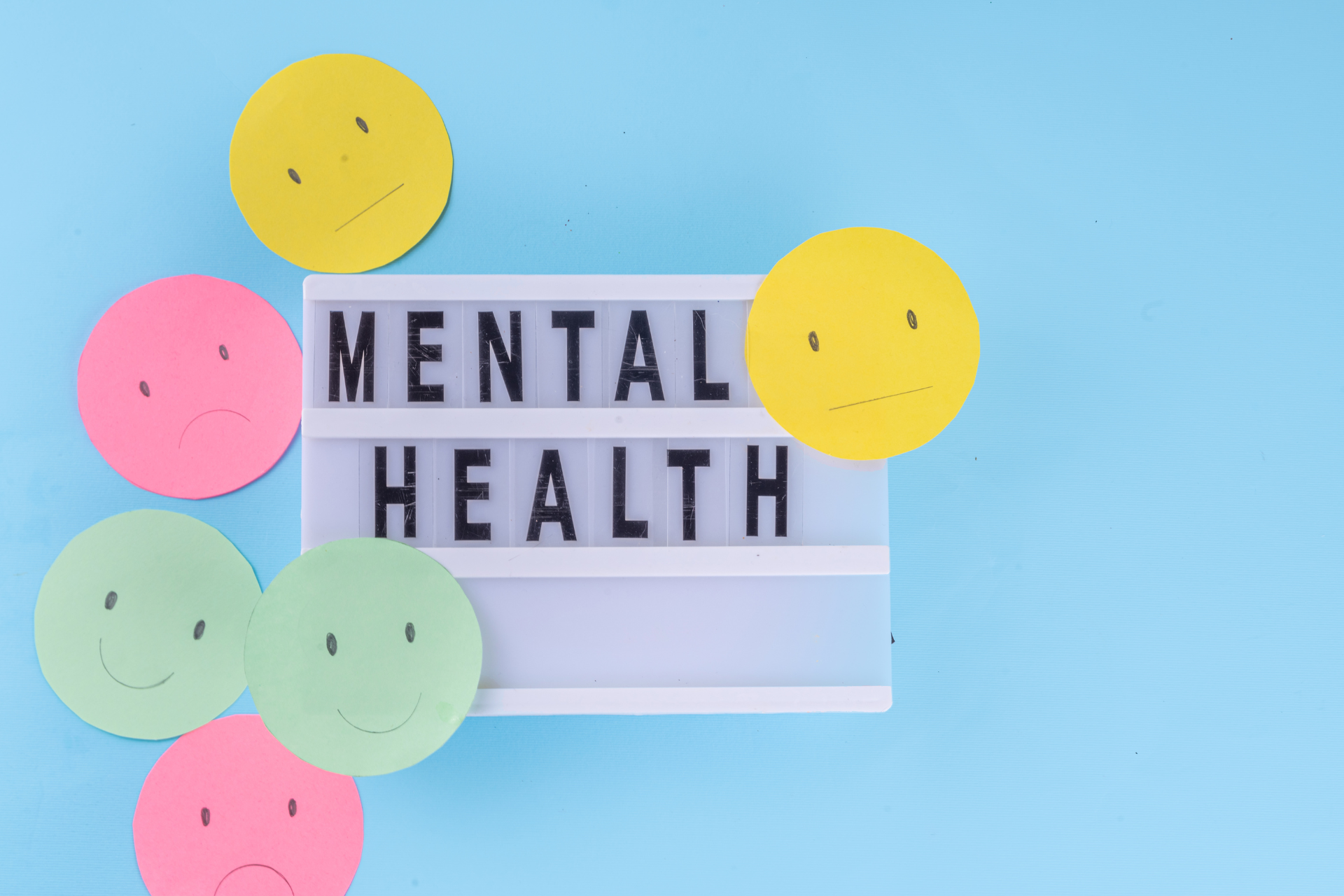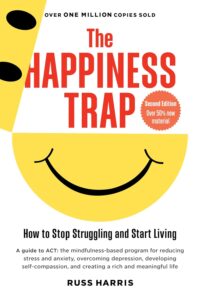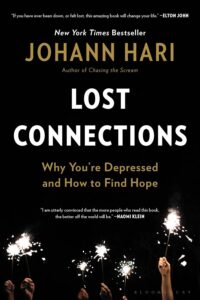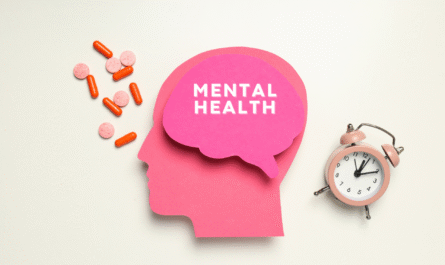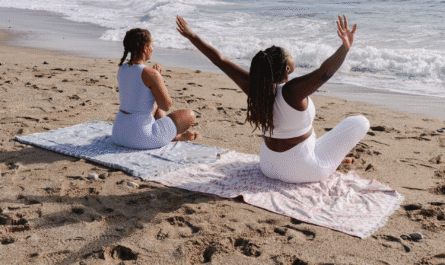Mental health exercises are essential tools for nurturing emotional resilience, managing stress, and enhancing brain health. In the same way we prioritize physical workouts for bodily strength, our minds also need structured and intentional activities to stay sharp, balanced, and well.
These mental routines are no longer just for people with diagnosed conditions—they’re critical for everyone in today’s fast-paced, overstimulated world.
Whether you’re a student under academic pressure, a professional balancing deadlines, or a parent navigating life’s many roles, your mental health determines how well you think, feel, and respond.
Incorporating regular wellbeing activities into your life can significantly reduce anxiety, improve mood, and enhance your overall outlook.
This guide provides a deep dive into mental health and fitness through a powerful list of 20 proven exercises that boost your brain activity and emotional wellness.
From mindfulness exercises for beginners to scientifically backed mental health worksheets, we’ll cover a range of tools for every age group and need.
Let’s explore why exercising your mind is not just helpful—it’s essential.
Why Mental Health Exercises Matter
Like your muscles, your mind thrives on regular and targeted stimulation. Mental health exercises help you maintain psychological flexibility, stay emotionally grounded, and build the strength to handle life’s curveballs. When you ignore your mental well-being, you’re more vulnerable to chronic stress, anxiety, and even burnout.
These exercises help beat anxiety by rewiring the brain’s response to stressors. Techniques like meditation and mindfulness, deep breathing, and journaling can lower cortisol levels and activate the parasympathetic nervous system.
This calming effect enables clearer thinking and a more stable mood. Over time, these habits contribute to better stress regulation and enhanced resilience.
Mental exercises also train your brain to catch and challenge negative thought patterns. This reduces the power of unhelpful cognitive distortions and boosts confidence and self-awareness.
With regular practice, you’ll become more equipped to manage mental noise, improve focus, and stay grounded in the present moment.
These benefits aren’t just psychological—they’re physiological too. Cognitive training and mindfulness exercises increase gray matter in areas linked to memory, emotion regulation, and decision-making. In other words, these practices support both emotional stability and brain health.
What Are Mental Health Exercises?
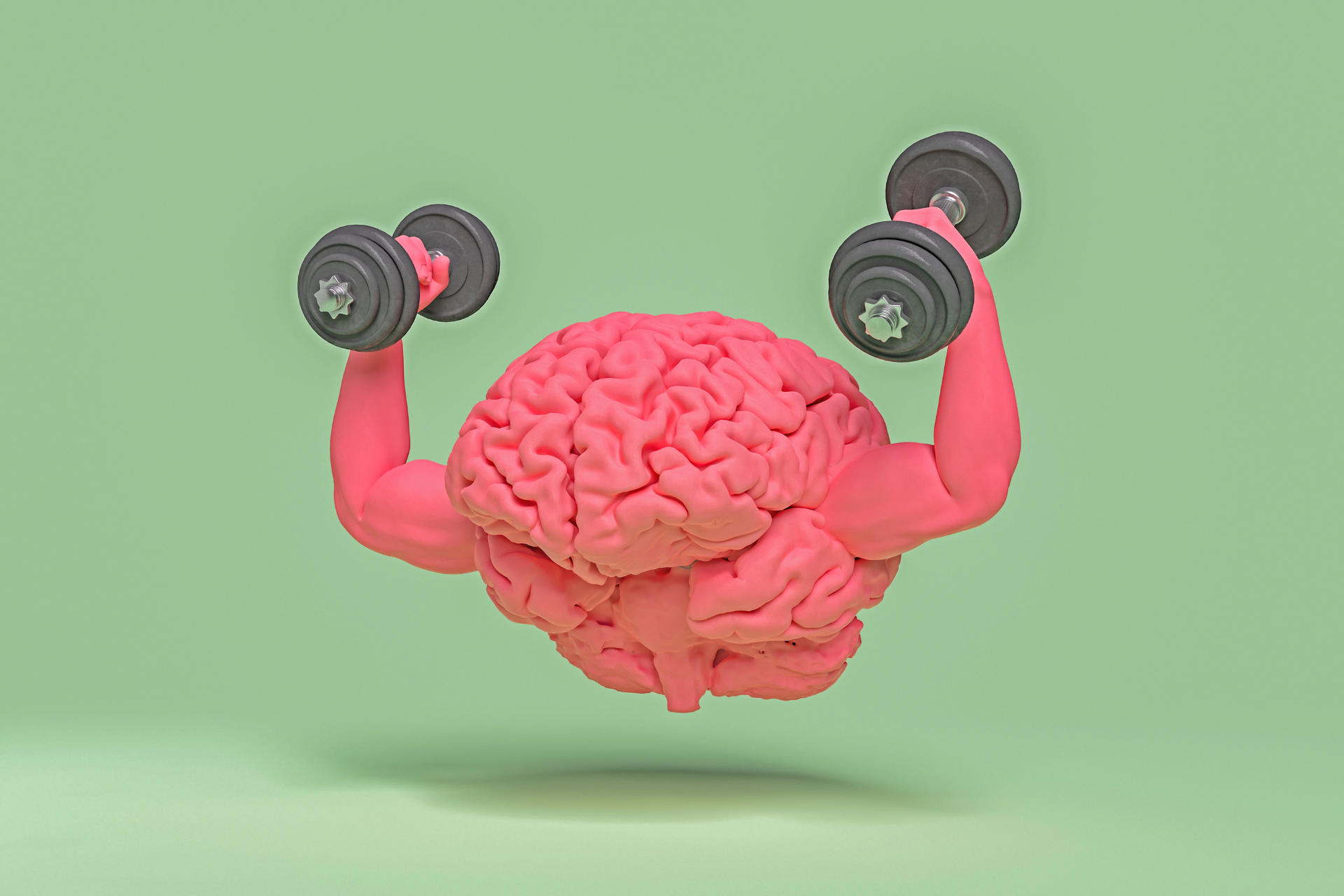
Mental health exercises are structured activities aimed at improving mental clarity, emotional regulation, and psychological resilience.
They can be as simple as journaling daily thoughts or as guided as cognitive-behavioral worksheets. What ties them together is their focus on proactive care—practicing these tools regularly enhances mental fitness in the same way consistent workouts improve physical health.
Unlike therapy or medication, these exercises are generally self-directed and non-clinical. That doesn’t make them less important.
They often complement professional treatment. For someone managing anxiety, for example, adding breathing techniques or gratitude journaling between therapy sessions can significantly enhance progress.
They’re also ideal for prevention. Practicing mental health tips like staying active, staying socially connected, and using mental health worksheets can stop stress from snowballing into something more serious. Just like brushing your teeth prevents cavities, mental health routines help prevent emotional and cognitive decline.
It’s also important to know that these practices aren’t one-size-fits-all. What works for one person may not resonate with another.
That’s why the upcoming list of 20 exercises includes a variety of options—so you can find what fits best for your lifestyle, goals, and current challenges.
5 Benefits of Mental Health Exercises
1. Emotional Regulation
One of the most immediate benefits of mental health exercises is improved emotional control. Practices like journaling, reframing negative thoughts, or practicing mindfulness help you gain perspective.
Instead of reacting impulsively to emotional triggers, you learn to respond intentionally. This increases your sense of inner calm and prevents mood swings from taking over your day.
When you engage in daily mindfulness exercises for beginners or advanced breathing routines, your brain becomes better at pausing and processing emotion instead of going into fight-or-flight mode. That internal shift reduces unnecessary conflict, boosts empathy, and fosters healthier relationships.
Emotional regulation also makes it easier to recover from setbacks. Let’s say you receive critical feedback at work. Instead of spiraling into self-doubt, a trained mind can separate emotion from fact, absorb the feedback, and move forward productively. That’s emotional fitness in action.
The result? Better communication, higher self-esteem, and a stronger sense of control over your internal world.
2. Resilience Building
Resilience is your mind’s immune system. And just like your body, you can strengthen it through consistent effort. Mental health exercises are a critical part of that effort.
They help you bounce back from challenges, disappointments, or traumatic experiences by rewiring your brain’s response to adversity.
Tools like cognitive reframing, gratitude journaling, and meditation and mindfulness techniques help you see setbacks as temporary and manageable.
Over time, your mindset shifts from “Why me?” to “What can I learn from this?”—a change that makes you stronger mentally and emotionally.
This increased resilience extends to long-term stress, too. People who practice mental health tips such as daily reflection, sleep hygiene, and connection-building are more likely to adapt effectively during difficult seasons of life, whether it’s a job loss, divorce, or health crisis.
Incorporating these habits during mental health week activities or regular check-ins at school or work makes resilience a shared goal, fostering a community that supports growth and recovery.
3. Cognitive Clarity
Clear thinking is a hallmark of strong mental health and fitness. Brain fog, distraction, and indecisiveness often stem from emotional overwhelm or chronic stress. Exercises that train attention, like focused breathing or guided meditation, can help restore clarity and direction.
This kind of cognitive clarity enhances every part of life: you make faster, smarter decisions, manage your time better, and communicate with more precision. That’s because the mind is less bogged down by clutter and more tuned into what matters.
Engaging in brain activity exercises like puzzles, strategy games, or even structured journaling helps sharpen executive function—the mental skills that govern planning, organization, and impulse control. That’s particularly useful for students and professionals juggling competing responsibilities.
Best of all, cognitive benefits are cumulative. The more consistently you train your mind, the better your attention span, memory, and problem-solving abilities become.
4. Physical and Psychological Synergy
Mental and physical health are deeply intertwined. When you engage in mental health exercises like deep breathing or progressive muscle relaxation, you’re not only calming your mind—you’re also reducing physical symptoms of stress like high blood pressure, tense muscles, or poor sleep.
Likewise, physical activity enhances mental clarity and mood. Exercise releases endorphins, boosts serotonin, and even promotes neurogenesis—the creation of new brain cells. That’s why wellbeing activities like yoga, hiking, or dancing are often recommended for managing depression or anxiety.
Sleep, nutrition, and movement play into this mind-body loop as well. For example, practicing sleep hygiene improves your brain’s ability to detox and recharge overnight. Add in structured journaling or mental health worksheets in the evening, and you’re maximizing mental recovery.
By syncing body and mind through consistent mental health practices, you’ll find that both start working better together.
5. Social Connection and Belonging
An often-overlooked benefit of mental health exercises is how they strengthen our social bonds. Humans are inherently social beings, and our mental well-being is closely tied to the quality of our relationships.
When you engage in activities that promote emotional awareness and empathy, such as mindfulness exercises, journaling about your feelings, or practicing active listening, you naturally become more present and connected with others.
Many mental health activities for kids and teens are designed around group participation because community interaction boosts mood and emotional development.
For adults, joining group classes like yoga or guided meditation can create a sense of belonging and reduce feelings of isolation. This is especially valuable in a digital age where real connection is easily lost in endless screen time.
Practicing connection-focused habits—like sending a gratitude message, scheduling a meaningful conversation, or volunteering—builds both self-esteem and social capital. These seemingly small interactions can significantly improve mood, reduce loneliness, and even extend lifespan.
Incorporating mental health week activities that focus on connection, like community cleanups or team-building games, makes mental health a shared responsibility. Ultimately, nurturing healthy relationships becomes both a form of personal therapy and a bridge to greater communal support.
20 Mental Health Exercises to Boost Brain Health

These 20 mental health exercises are designed to enhance your cognitive strength, emotional resilience, and overall well-being. Whether you’re looking for mindfulness exercises for beginners, effective meditation and mindfulness techniques, or simple habits to incorporate into mental health week activities, this list has you covered.
Each exercise below is broken down with depth and clarity to help you implement it meaningfully.
1. Mindfulness
Mindfulness is one of the most accessible and powerful mental health exercises available. It involves training your attention to stay in the present moment, fully aware, non-judgmentally. This helps quiet internal noise, reduces anxiety, and promotes calm. For beginners, this could start with simply observing your breath for one minute without trying to change anything.
What makes mindfulness powerful is its ripple effect. When practiced daily, it improves focus, reduces reactivity, and creates space between stimulus and response.
This is especially beneficial for people who struggle with overthinking or emotional outbursts. Mindfulness exercises for beginners often include body scans, mindful eating, or short walking meditations.
Mindfulness also changes the structure of your brain. Research shows that regular practice increases gray matter in areas related to memory, learning, and emotion regulation.
It rewires your brain for calm and clarity, which makes it one of the most recommended mental health tips by clinicians and psychologists alike.
You can start with just five minutes a day using apps like Headspace or guided videos on YouTube. The key is consistency, not perfection. Over time, mindfulness becomes not just a practice, but a lifestyle of conscious presence.
2. Meditation
Meditation is the cornerstone of many emotional healing practices. Unlike mindfulness, which is about awareness of the present, meditation often focuses on deep inner stillness or a specific object like the breath, a mantra, or even visualizations. Both practices overlap, but meditation tends to go deeper into silence and focus.
There are many meditation and mindfulness techniques to explore. Some people prefer mantra meditation, where you repeat a calming phrase.
Others lean toward loving-kindness meditation, which involves sending positive thoughts to yourself and others. Even focused-attention meditation—where you simply return to the breath whenever your mind wanders—can bring significant results.
The benefits of meditation include lower anxiety, improved emotional regulation, and sharper concentration. Neuroscientific studies have found that even short daily sessions can increase activity in the prefrontal cortex, the area responsible for reasoning and self-control. That makes it a great tool not only for stress reduction but also for long-term brain activity enhancement.
You don’t need an hour of silence or a Himalayan retreat to benefit. Just 10 minutes a day using apps like Calm or Insight Timer can dramatically improve your mental state and help you feel more grounded.
3. Gratitude Journaling
Gratitude journaling is a simple yet transformative mental health exercise. It involves writing down things you’re grateful for each day—anything from your morning coffee to a supportive friend. This exercise trains your brain to notice the good, even in hard times, which is a powerful antidote to anxiety and depression.
The key to this practice is depth over quantity. Instead of listing ten generic items, try describing in detail why one or two things made you feel thankful. This emotional connection helps the brain absorb the benefits more deeply, reinforcing positive neural pathways.
Gratitude journaling is especially helpful for people who struggle with negative thinking or low self-worth. By consciously shifting focus, it becomes easier to challenge the inner critic and develop a more balanced mental narrative. Over time, this leads to better sleep, stronger relationships, and even improved physical health.
If you’re using mental health worksheets or creating mental health activities for kids, a gratitude prompt like “What made you smile today?” is a great place to start. For adults, a nighttime journaling habit can be part of a calming bedtime routine that improves sleep and overall mood.
4. Breathing Exercises

Breathing exercises are the body’s built-in stress reset. Slow, intentional breathing stimulates the vagus nerve and activates the parasympathetic nervous system, leading to instant calm. This makes it one of the most effective mental health tips you can use anytime, anywhere.
One popular method is box breathing: inhale for four counts, hold for four, exhale for four, hold again for four. This rhythmic approach helps slow the heart rate, reduce muscle tension, and improve mental clarity.
Other effective techniques include 4-7-8 breathing and diaphragmatic breathing, often used in trauma recovery and anxiety therapy.
Breathing is unique in that it’s both automatic and controllable. This makes it a bridge between the mind and body. When you learn to control your breath, you’re also learning to influence your emotional state and stress levels—without needing any tools or technology.
Teaching breathing techniques during mental health week activities at schools or workplaces can equip participants with a practical tool they’ll use for life. It’s simple, fast, and free—yet profoundly impactful.
5. Physical Activity
Moving your body is one of the best mental health exercises you can do. Exercise isn’t just about building muscle—it’s about boosting brain chemistry.
Physical activity triggers the release of endorphins and serotonin, which lift your mood, reduce pain perception, and increase your sense of vitality.
You don’t need to hit the gym for two hours. A brisk 30-minute walk, dancing around your room, or following an online yoga flow can all be effective.
The goal is movement with intention. Regular exercise also improves sleep, reduces symptoms of depression, and enhances cognitive function, making it a powerhouse for mental health and fitness.
For kids, incorporating mental health activities like obstacle courses or dance breaks into the school day can improve focus and reduce behavioral issues. For adults, even walking meetings or lunchtime strolls can make a difference.
What’s most important is consistency. Treat movement as a non-negotiable part of your mental hygiene. Whether you love swimming, biking, hiking, or stretching, find your favorite form of physical expression—and do it regularly.
6. Cognitive Reframing
Cognitive reframing is a mental technique that helps you shift how you interpret events. Instead of seeing a setback as proof of failure, reframing teaches you to view it as a learning opportunity. This subtle shift can dramatically impact your self-esteem and resilience.
Rooted in cognitive-behavioral therapy, reframing is a powerful tool for battling negative thought patterns. For example, if you find yourself thinking “I always mess up,” a reframed version might be “I made a mistake, but I’m learning from it.” This form of mental training increases emotional flexibility and self-compassion.
You can practice cognitive reframing through journaling, working with a therapist, or using structured mental health worksheets. Prompts like “What’s another way to look at this?” or “What advice would I give a friend in this situation?” are simple but powerful starting points.
In group settings like classrooms or support groups, reframing can be part of mental health week activities that build empathy and communication. It’s a skill that takes practice, but once mastered, it becomes a lifelong ally.
7. Prioritizing Sleep
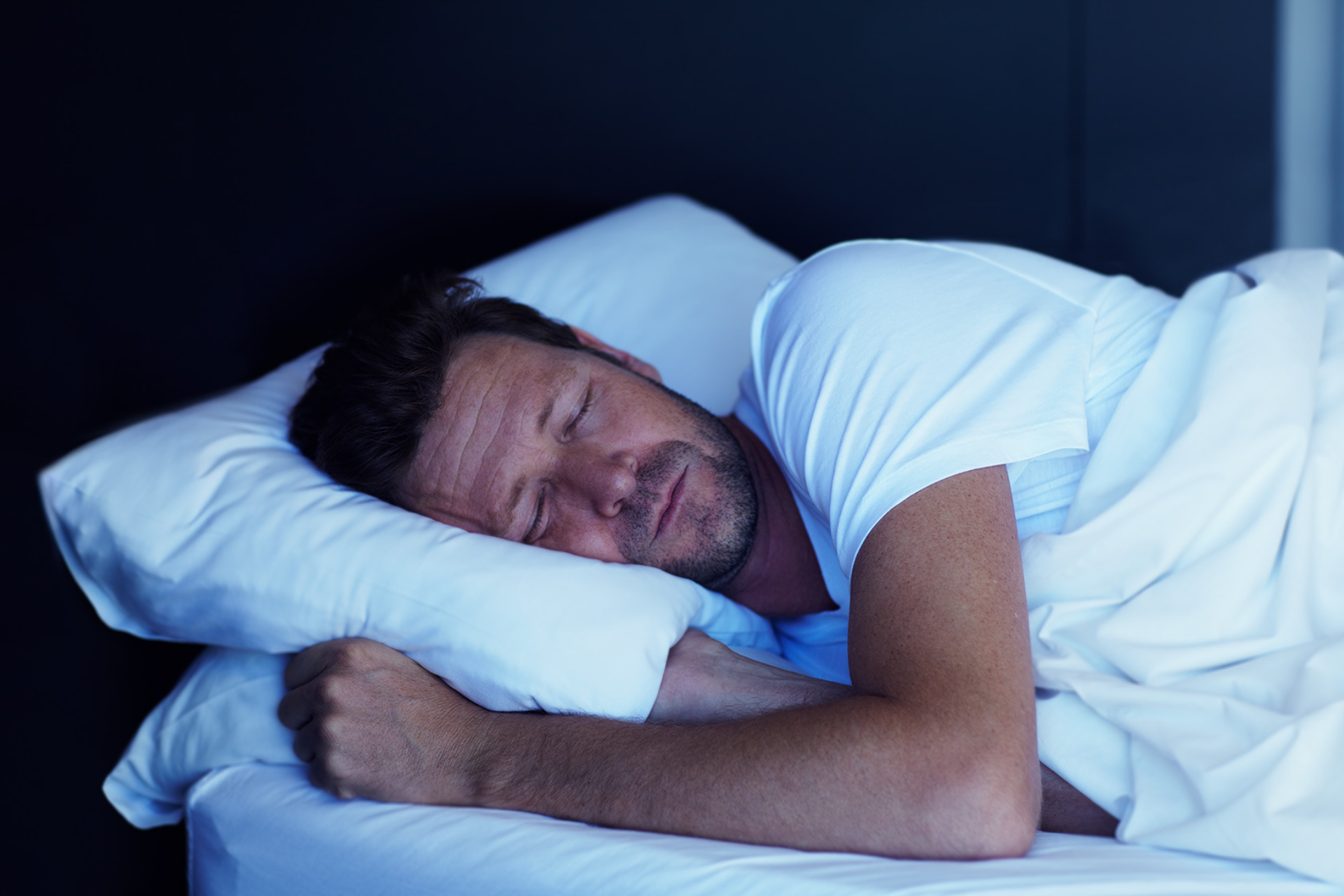
Sleep isn’t just rest—it’s restoration for your brain. Chronic sleep deprivation is a major contributor to mental health issues like depression, anxiety, and even memory loss. Making sleep a priority is one of the most overlooked mental health tips, yet it’s foundational for mental clarity and emotional stability.
The brain clears toxins, consolidates memories, and resets emotional circuits during sleep. Skimping on it compromises focus, mood, and decision-making. Adults need 7–9 hours of quality sleep, and that includes establishing a calming bedtime routine and avoiding screens before bed.
Try pairing sleep routines with other mental health exercises like gratitude journaling or progressive muscle relaxation. This reinforces both the mental and physical preparation for quality rest.
For teens and kids, schools can incorporate mental health activities that promote good sleep hygiene, like setting tech-free zones or establishing “wind-down” hours. A well-rested brain is a more resilient, happy, and productive one.
8. Connecting with Others and Nature
Humans are wired for connection. Social bonds and exposure to nature are both proven mood boosters and essential parts of mental health and fitness.
When you isolate, your brain goes into survival mode, which increases anxiety, overthinking, and even physical pain. Connection pulls us out of that loop.
Spending quality time with loved ones, joining community activities, or volunteering are all powerful ways to nurture mental wellbeing. Likewise, being in nature—even for 15 minutes—can lower cortisol, reduce inflammation, and restore mental balance. Activities like hiking, gardening, or simply walking barefoot on grass can serve as grounding practices.
These connections don’t have to be deep conversations—they can be shared experiences, quiet moments, or small acts of kindness. The point is to actively foster meaningful interaction and sensory engagement with the world.
During mental health week activities, encouraging group walks, team-based games, or outdoor learning can amplify the benefits of connection. A connected mind is a healthier, more resilient mind.
9. Visualization
Visualization is a powerful technique where you mentally rehearse positive outcomes, calming scenes, or personal goals. It combines imagination with mindfulness to activate the same brain regions used during real experiences. This makes visualization a potent tool for stress reduction, confidence-building, and emotional regulation.
Athletes have used it for decades to improve performance, but it’s just as effective for mental health and fitness. Visualizing yourself succeeding at a task, navigating a tough conversation, or simply relaxing on a beach can create the emotional and physiological benefits of the real event. This builds confidence and reduces anticipatory anxiety.
Guided visualization scripts are widely available and often paired with meditation and mindfulness techniques. You can start by sitting quietly and imagining a safe, peaceful place in vivid detail—sight, sound, smell, and sensation. Doing this for just 10 minutes a day can reduce anxiety and create a sense of emotional safety.
Incorporate visualization into mental health activities for kids by asking them to “draw their happy place” and then close their eyes to imagine being there. For adults, this technique can be used before sleep, presentations, or big decisions to foster mental clarity and emotional calm.
10. Journaling for Self-Inquiry

Journaling for self-inquiry goes beyond gratitude lists or daily recaps. It’s about digging into your thoughts, emotions, and behaviors to understand the deeper “why” behind them. This promotes emotional intelligence, self-compassion, and clearer thinking—all pillars of strong mental health exercises.
You might ask questions like “What am I avoiding?” or “What do I need right now?” The goal is not to fix but to explore. This form of journaling is reflective rather than reactive. It helps you become more aware of unconscious patterns, internal conflicts, and needs that may be driving your decisions.
Pairing journaling with structured prompts from mental health worksheets or therapy-based templates can help guide the process. Writing by hand often makes the process more intimate and grounding, though digital journaling apps work just as well.
Encourage teens and adults to use this during mental health week activities as a safe space for self-reflection. Over time, journaling creates a personal archive of growth and resilience—a tangible reminder of how far you’ve come.
11. Art and Creative Expression
Creative expression is not just for artists—it’s an essential human outlet for emotion. Painting, drawing, sculpting, music, dance, and writing are all forms of self-regulation and processing. These wellbeing activities help externalize emotions that may be hard to articulate, offering relief, insight, and healing.
Neuroscience shows that engaging in creative activities boosts dopamine, the feel-good neurotransmitter, while reducing cortisol levels.
This makes it an excellent strategy for anxiety, trauma recovery, and overall emotional well-being. It also helps shift focus from problem-solving to flow states, where time melts away and calm sets in.
Creative expression is especially powerful in group settings. Hosting art therapy sessions, open mics, or journaling circles during mental health week activities can foster community while encouraging vulnerability in a non-verbal format. It’s also great for younger audiences who may not yet have the language to describe their feelings.
No talent is needed—just willingness. Expressive outlets create safety, build confidence, and offer moments of joy. In a world full of pressure to “perform,” creativity permits us to just be.
12. Affirmations and Self-Talk Training
The way you talk to yourself shapes how you see the world—and yourself. Affirmations are short, powerful statements designed to reprogram your inner dialogue and support healthier mental patterns. When used consistently, they help challenge limiting beliefs and boost self-worth.
Phrases like “I am enough,” “I can handle this,” or “I am growing every day” may seem simple, but repeated daily, they reshape your cognitive filters. This is known as neuroplasticity—the brain’s ability to rewire itself through experience. That makes affirmations one of the most empowering mental health tips available.
Combine affirmations with mirror work (saying them while looking at yourself), journaling, or vision boards for maximum impact.
Even recording your voice and listening during your morning routine can train your subconscious to lean toward optimism rather than fear or doubt.
For kids and teens, crafting personal affirmations as a class project can be a powerful mental health activity. Adults can integrate them into meditation, workouts, or sleep rituals. What you tell yourself daily becomes your truth, so choose your words carefully and lovingly.
13. Practicing Forgiveness

Holding onto anger, guilt, or resentment takes an emotional toll. Forgiveness—not as a one-time act but as an ongoing practice—is one of the most liberating mental health exercises you can do. It frees up emotional bandwidth, reduces stress, and improves relationships.
Forgiveness doesn’t mean condoning bad behavior or forgetting. It means choosing peace over prolonged pain. It’s as much a gift to yourself as it is to the other person.
The act of releasing emotional poison allows the brain and body to relax, which in turn boosts brain activity, immune function, and overall well-being.
Start with small steps. Write a letter you never sent, say the words in meditation, or visualize cutting emotional cords. Forgiveness journaling prompts are available in many mental health worksheets and therapy programs to guide this complex but transformative journey.
During mental health week activities, offering forgiveness workshops or guided group discussions can create profound shifts in collective emotional energy. It’s one of the most courageous things you can do for your peace.
14. Setting Boundaries
Setting boundaries is an act of self-respect. It protects your time, energy, and mental peace. Yet many people avoid boundaries out of guilt or fear of rejection. This makes it a critical skill in mental health and fitness—one that strengthens relationships, self-worth, and emotional safety.
Boundaries can be physical, emotional, digital, or energetic. Saying no, asking for space, or turning off your phone during personal time are all forms of boundaries. They prevent burnout and empower you to show up fully when you do engage.
Learning to set and uphold boundaries often requires practice and support. Role-playing scenarios, journaling triggers, or using mental health worksheets can help clarify where your boundaries lie. Boundaries are not walls—they are doors you control.
Incorporating boundary-setting roleplays into school or workplace mental health activities can empower participants to advocate for themselves more confidently. The more you practice, the more natural and necessary it becomes.
15. Volunteering and Altruism
Helping others is one of the fastest ways to improve your own mental state. Volunteering and acts of kindness release endorphins, create social connection, and add meaning to life. It’s a win-win mental health strategy that strengthens both self and community.
Studies show that people who engage in regular altruism report lower levels of depression and higher life satisfaction. That’s because giving shifts focus away from personal problems and toward purpose. Whether it’s serving meals, mentoring youth, or simply offering time and presence, every act of kindness counts.
Incorporate service-based mental health week activities like group volunteering, fundraising events, or donation drives. This fosters unity, empathy, and shared growth across teams and age groups.
For those struggling with depression or anxiety, volunteering provides structure, motivation, and a reminder that you matter. Even small, local actions can generate lasting internal change.
16. Nutrition and Mental Fuel

What you eat affects how you think and feel. Nutrition is foundational to mental health and fitness, yet it’s often neglected. Omega-3s, complex carbs, magnesium, and vitamin D all play roles in regulating mood, focus, and energy levels.
Sugar crashes, processed foods, and dehydration are linked to brain fog, irritability, and even depressive symptoms. A balanced diet fuels the brain’s neurotransmitters and supports sustained emotional stability. Think of food as daily brain fuel, not just calories.
Pairing mental health tips with nutritional awareness—like planning healthy meals, hydrating often, and avoiding energy crashes—makes self-care holistic. Some mental health worksheets now include food mood journals to track how diet affects emotion.
Workplaces and schools can introduce “brain food” challenges or healthy snack days as part of mental health week activities. Your brain and body are a team—feed both well.
17. Time in Silence
We live in a noisy world—mentally, emotionally, and physically. Spending intentional time in silence is one of the most underrated mental health exercises for gaining clarity and restoring inner peace. It’s not just about quiet surroundings, but about quieting the internal dialogue.
Silence allows your brain to integrate information, process emotions, and recharge creativity. Even five minutes of complete stillness can lower blood pressure and reduce mental clutter. Over time, silence becomes a sacred container for insights and self-awareness.
Start by turning off music or podcasts during commutes or taking short breaks without screens. Use this space to breathe, observe your thoughts, or simply do nothing. Silence isn’t empty—it’s full of potential.
Including silent reflection time in mental health week activities helps normalize rest and stillness as productive, not passive. The more you embrace silence, the more you’ll discover within it.
18. Nature Walks and Grounding
Spending time outdoors isn’t just refreshing—it’s medicinal. Nature therapy, or “ecotherapy,” involves connecting with natural elements to reduce stress and boost mood. A simple walk in a park, touching soil, or watching a sunset activates sensory systems and regulates your nervous system.
Grounding, specifically, involves direct skin contact with the earth, like walking barefoot, sitting on grass, or touching a tree. It balances cortisol levels, reduces inflammation, and promotes calm. This is especially effective for managing anxiety and sensory overload.
Create mental health activities for kids around nature scavenger hunts, gardening, or outdoor storytelling. For adults, forest bathing or solo walks can become weekly rituals for mental reset.
Nature heals. Building a consistent outdoor habit is one of the most sustainable forms of mental health and fitness available.
19. Limiting Digital Overload
Our brains aren’t built for 24/7 stimulation. Constant notifications, endless scrolls, and digital comparison culture are taking a toll on collective mental health. That’s why digital detoxing or mindful tech use is a crucial modern mental health tip.
Set screen limits, turn off non-essential notifications, and create “no phone” zones or hours in your day. Use apps to monitor screen time or take scheduled social media breaks. You’ll notice better focus, sleep, and emotional stability almost immediately.
For kids and teens, include digital literacy and boundaries as part of mental health activities that emphasize healthy online behavior. For adults, schedule off-screen hobbies like reading, journaling, or nature walks.
Managing digital input is an act of mental hygiene. Protect your attention like it’s your most valuable asset—because it is.
20. Daily Check-Ins
The final exercise is simple but incredibly powerful: a daily mental health check-in. This can be one minute or ten. Ask yourself, “How am I feeling? What do I need? What’s one thing I can do for myself today?” This daily pause builds emotional literacy and responsiveness.
You can pair this with a journal, a voice note, or even a mirror conversation. The key is consistency—checking in prevents emotional backlog and encourages real-time self-care decisions. It’s also a way to catch small issues before they become big ones.
Use mood trackers, journaling prompts, or mental health worksheets as tools for your check-in routine. For families or classrooms, shared daily check-ins create safe environments for emotional sharing and support.
This habit helps you feel seen by yourself. In the chaos of life, a few moments of honest reflection can make all the difference.
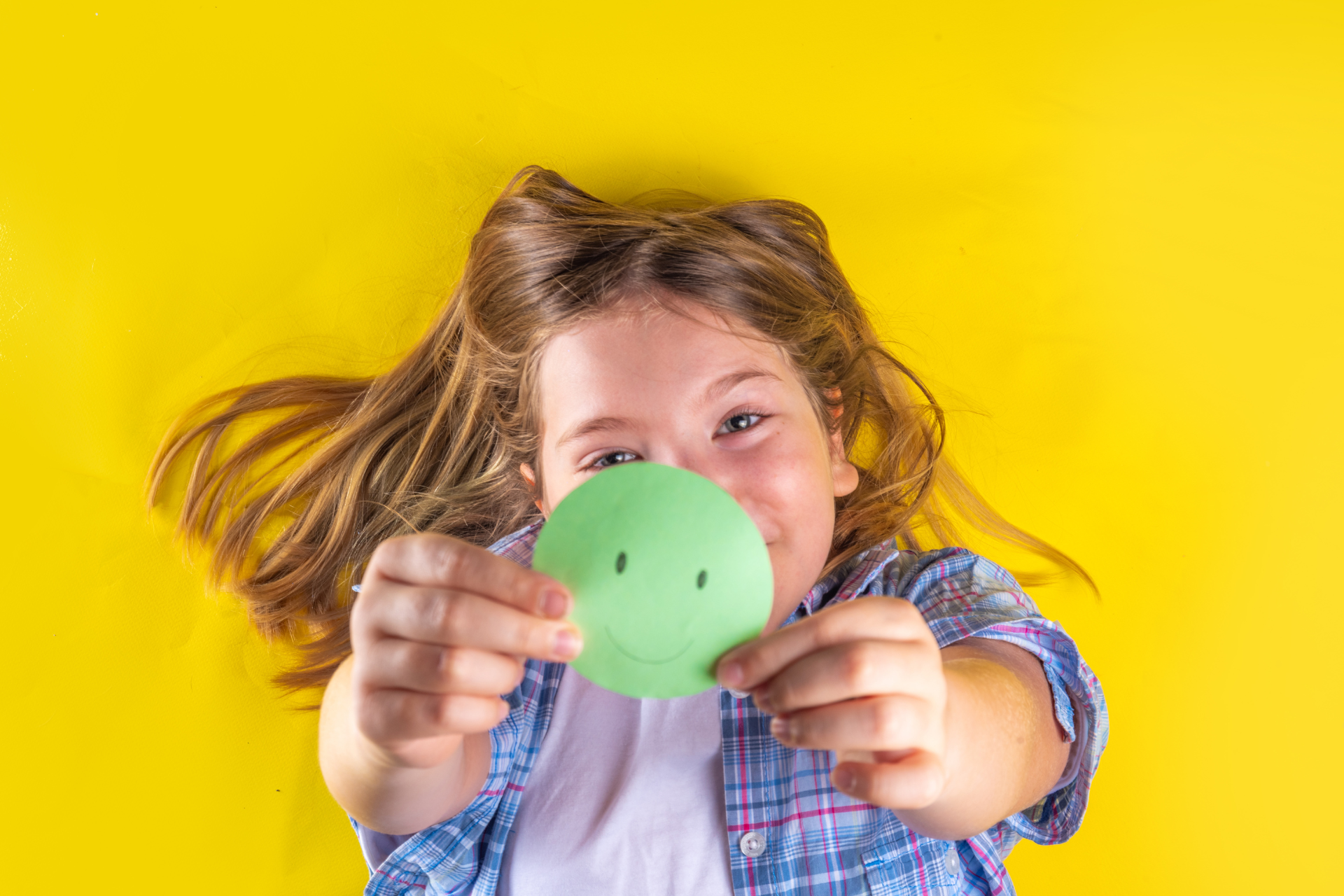
Fun Mental Health Games and Activities
Promoting emotional wellness doesn’t have to be serious all the time—fun can be therapeutic too. Mental health exercises can be transformed into games that teach emotional regulation, boost self-awareness, and strengthen connections.
These activities work well for individuals, families, classrooms, and even corporate teams. They combine wellbeing activities with creativity to foster mental resilience in a playful, engaging way.
1. Emotion Charades
Acting out feelings like “frustrated,” “excited,” or “anxious” without using words helps participants build emotional vocabulary. This is great for mental health activities for kids, but also valuable for adults learning to name their emotions. Pair the game with a discussion to reflect on how each emotion feels in the body.
2. The Compliment Circle
Each person gives a specific, sincere compliment to the person beside them. This promotes connection and lifts self-esteem. It’s a favorite in classrooms and mental health week activities in offices. Gratitude and positive reinforcement are central themes in many positive psychology approaches.
3. Coping Skills Bingo
Create a bingo card with various coping strategies—deep breathing, journaling, taking a walk, etc. As participants use each skill throughout the week, they mark their progress. This is a fun, non-competitive way to reinforce healthy habits.
4. Draw Your Mood
Each participant uses colors and shapes to illustrate how they feel. This activity helps develop emotional insight, especially among children and teens who may struggle to verbalize feelings. It’s also a great non-verbal entry point for group discussion.
5. Scenario Role-Plays
Acting out “what would you do if…” scenarios helps build emotional resilience, problem-solving, and communication skills. Use situations like handling peer pressure, dealing with failure, or managing anger. These role-plays are excellent additions to both teen and adult mental health tips programs.
Incorporating these games during mental health week activities or family wellness nights ensures learning happens in a low-pressure, high-impact format. Fun doesn’t just lighten the mood—it opens minds.
Mental Health Exercises for Teens
Teenagers experience rapid emotional, physical, and cognitive changes. During this stage, mental health exercises can provide critical support, building healthy coping mechanisms that last a lifetime.
These tools help teens regulate emotions, build identity, and handle social stress, especially during periods of high pressure such as exams, peer challenges, or family changes.
1. Worksheets
Structured mental health worksheets are powerful tools for teens. They offer a guided way to explore thoughts, feelings, and behaviors. Popular worksheets focus on identifying triggers, challenging negative beliefs, building self-esteem, and managing anxiety.
Schools and counselors can integrate these into advisory periods, therapy sessions, or mental health week activities. Worksheets like “Thoughts vs. Facts” or “Emotion Thermometers” help teens develop emotional literacy and cognitive flexibility. They’re ideal for individual reflection or as conversation starters in group settings.
Printable resources are widely available online, including teen-focused packs that align with mindfulness exercises for beginners or CBT (Cognitive Behavioral Therapy) models. When combined with journaling or talk therapy, worksheets become a potent daily habit.
The structure and clarity of worksheets make them approachable for teens who may find abstract talk intimidating. It gives them a place to “see” their progress and learn self-soothing techniques they can use independently.
2. Psychoeducational Articles
Psychoeducation equips teens with the knowledge to understand their mental health. Age-appropriate articles on topics like stress management, social anxiety, or digital burnout help normalize what they’re feeling and encourage help-seeking behavior.
These articles can be part of school newsletters, classroom lessons, or shared on student portals. Providing science-backed information in simple, relatable language empowers teens with agency over their well-being. Articles that include mental health tips or interactive sections—like quizzes or journaling prompts—are especially engaging.
Incorporating these into mental health week activities helps create a culture of curiosity and open conversation. When teens learn that mental struggles are common and manageable, stigma begins to dissolve.
Educators and parents can use these articles to spark one-on-one conversations or group discussions, helping teens connect the dots between knowledge and practice.
3. Promoting Mental Health Awareness on Campus
School campuses are ideal spaces for building mental health awareness and community. Creating visible, consistent mental health activities reminds teens that their well-being is a priority. Awareness doesn’t require a huge budget—just intention and consistency.
Initiatives can include themed dress days, poster contests, guided meditations during homeroom, or even mental health trivia games. Partnering with student leadership groups ensures authenticity and peer-driven momentum. Distributing resources like mental health worksheets and mindfulness challenge calendars can help reinforce messaging.
Invite guest speakers—like psychologists or young adult authors—to speak about mental health journeys and coping skills. These moments create powerful resonance for students who may be silently struggling.
Ultimately, the goal is to normalize support-seeking behavior and encourage teens to treat mental health and fitness as something to actively nurture, not just fix when broken.
4. Interactive Awareness Activities
Teen engagement thrives on interaction. Mental health exercises for this group should be social, sensory, and meaningful. Interactive activities include journaling walls, body scans during gym class, or creating collective art projects around emotional themes.
One effective example: the “Stress Dump” station—students anonymously write down something causing stress, then symbolically shred, bury, or throw it away. This physical action creates a real sense of emotional release. Another idea is an “Emotion Playlist,” where teens curate songs that reflect or shift their mood.
You can also host peer-led workshops where students present short activities, like breathing techniques or gratitude games, to their classmates. These interactions help memorably reinforce emotional tools.
Making mental health tangible, visible, and collaborative empowers teens to feel seen, supported, and capable of change.
Mental Health Exercises for Adults
Adults juggle responsibilities that often leave their well-being on the back burner. Work, parenting, finances, and caregiving all place constant demands on mental bandwidth. That’s why mental health exercises tailored to adult lifestyles are essential for maintaining balance, clarity, and resilience.
Age-Appropriate Tools and Challenges
What works for teens won’t always work for adults. For instance, adults often benefit more from structured reflection tools, time-blocking stress relief, and boundary-setting practices. Exercises like value-based journaling, breathing paired with meditation and mindfulness techniques, or body awareness scans are particularly effective.
Adult-focused mental health worksheets might explore work-life balance, emotional triggers, relationship health, and burnout recovery. These resources help break down complex emotions into actionable insights. Even five minutes of journaling at lunch can prevent mental fatigue from spiraling.
Real-world application is key: adults need tools they can use in the car, at their desk, or during parenting duties. That’s why short meditations, checklists, and affirmations make practical, everyday self-care feel accessible.
Providing these resources during HR wellness programs or therapy sessions ensures adults feel empowered to build their emotional toolkit, no matter their starting point.
Group vs. Individual Options
Some adults thrive in solitude; others find healing in community. Offering both solo and group mental health exercises ensures all personality types are supported. Group options include wellness workshops, mindfulness clubs, support circles, or art therapy sessions.
Solo practices might include walking meditations, solo retreats, vision boarding, or reflective journaling. These offer privacy and personalization, which is essential for introverts or those new to mental health practices.
For workplaces, team-based mental health week activities like gratitude walls or stress-relief breaks build connection while reducing collective stress. In families, shared activities like emotional check-in circles or wellness game nights create bonding while modeling healthy behavior.
The most important takeaway is choice. Adults are more likely to stick with wellbeing activities that suit their natural preferences and schedules. Offering flexibility increases both participation and long-term impact.
Choosing the Right Mental Health Exercises: 3 Key Tips
With so many tools out there, it can feel overwhelming to know where to start. Choosing the right mental health exercises means selecting practices that are both effective and sustainable for your unique lifestyle. These three tips can guide the selection process.
1. Personal Relevance
The best exercise is the one you’ll do. Start by choosing mental health habits that align with your personality and daily rhythm. Are you introspective? Journaling might suit you. Social and outgoing? Group workshops or volunteering could be better. Prefer structure? Use mental health worksheets or daily habit trackers.
Relevance also means recognizing your current emotional needs. If you’re feeling burned out, restorative practices like sleep hygiene or guided meditation may be more appropriate than cognitive challenges. Personal fit increases motivation and consistency.
Avoid adopting routines that feel forced or disconnected just because they’re trendy. The goal is sustainable mental fitness, not performative wellness.
2. Evidence-Backed Methods
With endless wellness content online, it’s crucial to focus on mental health exercises grounded in research. Techniques from cognitive-behavioral therapy, mindfulness-based stress reduction, and positive psychology offer evidence-based results.
Look for exercises supported by clinical studies, such as gratitude journaling for improved mood, deep breathing for reduced anxiety, or progressive muscle relaxation for sleep improvement. Many of these are available in formats like mental health worksheets or guided audio tracks.
Working with a therapist or coach can also help you personalize these strategies. Evidence-backed doesn’t mean rigid—it means you’re using tools with a proven foundation for change.
3. Ease of Integration into Daily Life
Consistency beats intensity. Choose exercises that fit naturally into your existing routines. You’re more likely to stick with a five-minute gratitude ritual each morning than an hour-long journaling session that feels like a chore.
Think small: a one-minute breathing reset between meetings, a 10-minute walk after lunch, or evening reflection using a worksheet. Build habits that are easy to repeat—even on your busiest days.
Ease also means accessibility. Free apps, printable worksheets, and everyday objects (like a notebook or candle) make wellness feel doable. Mental health should feel like part of your life, not another item on your to-do list.
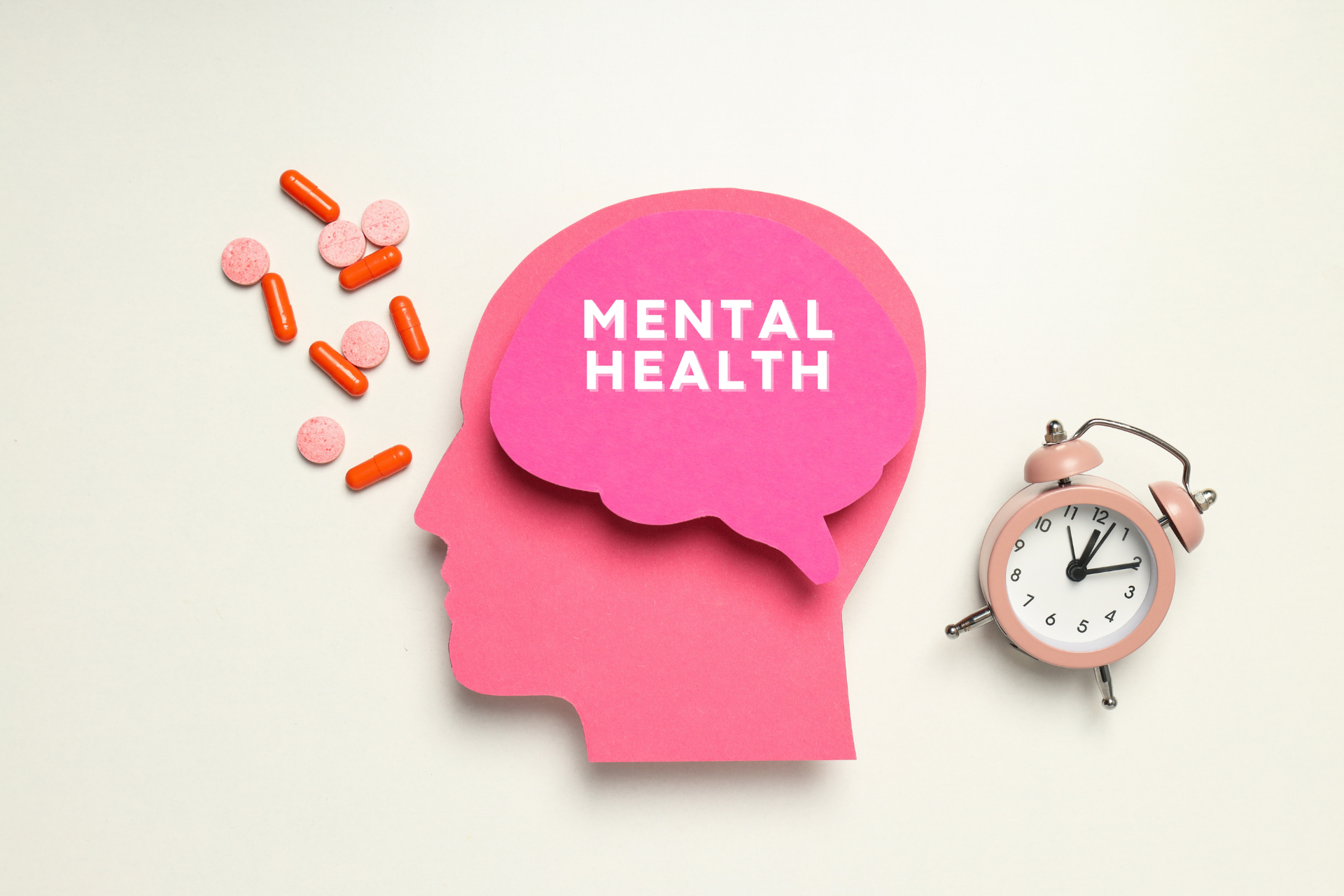
3 Mental Health Worksheets
1. Managing Negative Thoughts
Negative thinking can snowball quickly if left unchecked. A worksheet focused on identifying and challenging negative thoughts helps create distance from those inner narratives. By breaking down a thought into its origin, emotion, evidence, and alternative perspective, the brain learns how to interrupt cognitive distortions and create balance.
This worksheet format is based on core CBT techniques and works especially well for anxiety and low self-worth. Whether you’re an adult trying to manage impostor syndrome or a teen dealing with social pressure, this tool creates real-time clarity. Many therapists and educators include it in mental health week activities or school-based interventions.
2. Overcoming Low Mood
Another essential worksheet format focuses on mood tracking and behavioral activation. Users list their daily mood, identify contributing factors, and explore small actions that could help improve their state. This not only supports emotional awareness but also builds hope and motivation.
These worksheets are especially effective when used alongside mental health tips like gratitude journaling, physical movement, and connection. It helps turn vague sadness into an actionable plan, giving structure to healing.
3. Goal-Setting and Self-Reflection
Setting personal goals and reflecting on progress builds self-efficacy, one of the most important traits for strong mental health. Goal-setting worksheets ask users to clarify what matters to them, break goals into steps, and track emotional reactions along the way.
These tools are great for therapy clients, coaches, and educators alike. They help users connect everyday actions to long-term growth. Self-reflection prompts like “What worked well this week?” or “What did I learn about myself?” deepen emotional insight and accountability.
These printable tools serve as great additions to wellbeing activities and can be customized for both personal and group use.
10 Positive Psychology Exercises for Practitioners
Positive psychology emphasizes strengths, optimism, and flourishing, not just managing illness. The world’s largest repository of evidence-based mental health exercises includes tools that help people thrive emotionally, socially, and mentally. Practitioners use these to complement therapeutic work or lead wellness workshops with real, research-backed impact.
1. Best Possible Self Visualization
This guided journaling or visualization activity asks people to imagine their ideal future—career, relationships, health, etc.—and describe it in vivid detail. It enhances hope, goal orientation, and motivation.
2. Strength Spotting
Identifying and using your top character strengths in daily life boosts resilience and satisfaction. Use assessments like VIA Character Strengths and follow-up worksheets to reflect on how to apply them intentionally.
3. Savoring the Moment
This mindfulness-based exercise asks people to fully experience a positive moment, using all five senses. It trains attention toward joy and improves emotional regulation.
4. Gratitude Letter
Writing a heartfelt letter to someone who’s had a positive impact (and ideally delivering it in person) has been shown to dramatically increase happiness and reduce depressive symptoms.
5. Self-Compassion Break
This practice, developed by Dr. Kristin Neff, teaches users to respond to mistakes and pain with kindness, not judgment. It blends meditation and mindfulness techniques with cognitive reframing.
6. Three Good Things
A classic nightly practice where people list three positive things that happened each day and reflect on why they occurred. Over time, it shifts attention away from stress and toward strength.
7. Acts of Kindness Tracker
Performing and recording acts of kindness increases social connection and personal satisfaction. Great as part of mental health activities for kids and adults alike.
8. Resilience Timeline
Mapping out past challenges and noting how you overcame them reinforces self-belief. It’s a reminder that you’ve faced storms and survived.
9. Mindful Eating Exercise
Focus on the texture, taste, and origin of a simple food like a raisin or piece of chocolate. This not only increases awareness but also reduces impulsive emotional eating.
10. Flow State Tracker
Users log activities that absorb them completely and reflect on how to create more opportunities for these “flow” states, which are linked to optimal mental health and productivity.
Digital Support: Mental Health Apps
Technology can make mental health exercises more accessible and convenient. Whether you’re looking for a quick breathing guide or a full mindfulness journey, apps offer structure, reminders, and progress tracking to help you stay consistent.
Headspace
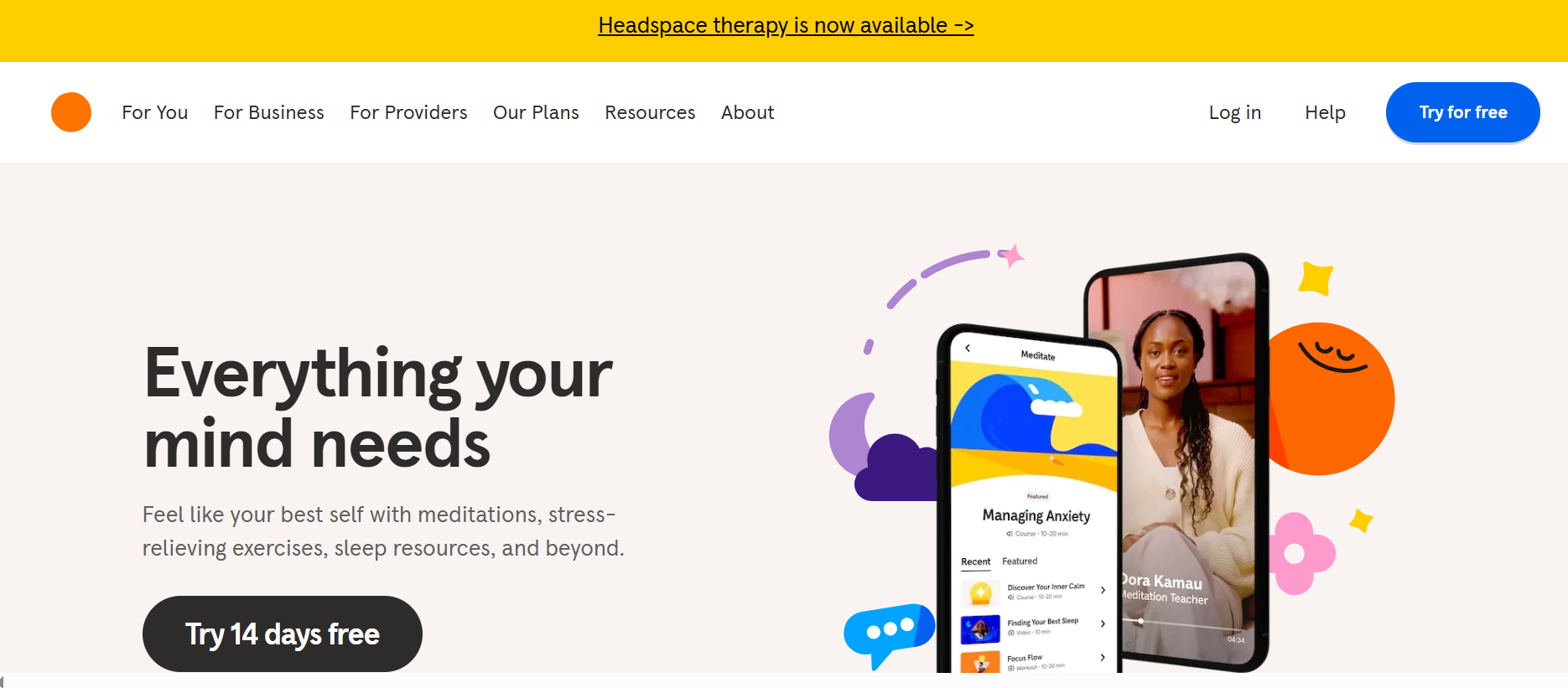
Headspace is one of the most well-known mental health apps, offering guided meditations, sleep stories, focus-enhancing soundscapes, and mindfulness courses. It’s especially helpful for beginners looking to start mindfulness exercises for beginners.
With themed courses on stress, anxiety, productivity, and compassion, Headspace serves as a portable mental health coach. You can also find short, three-minute meditations for when time is limited—perfect for busy adults and students.
Their visual design, friendly tone, and research-backed approach make the app suitable for users of all ages. For schools or businesses, Headspace also offers team plans and wellness integrations.
Moodfit
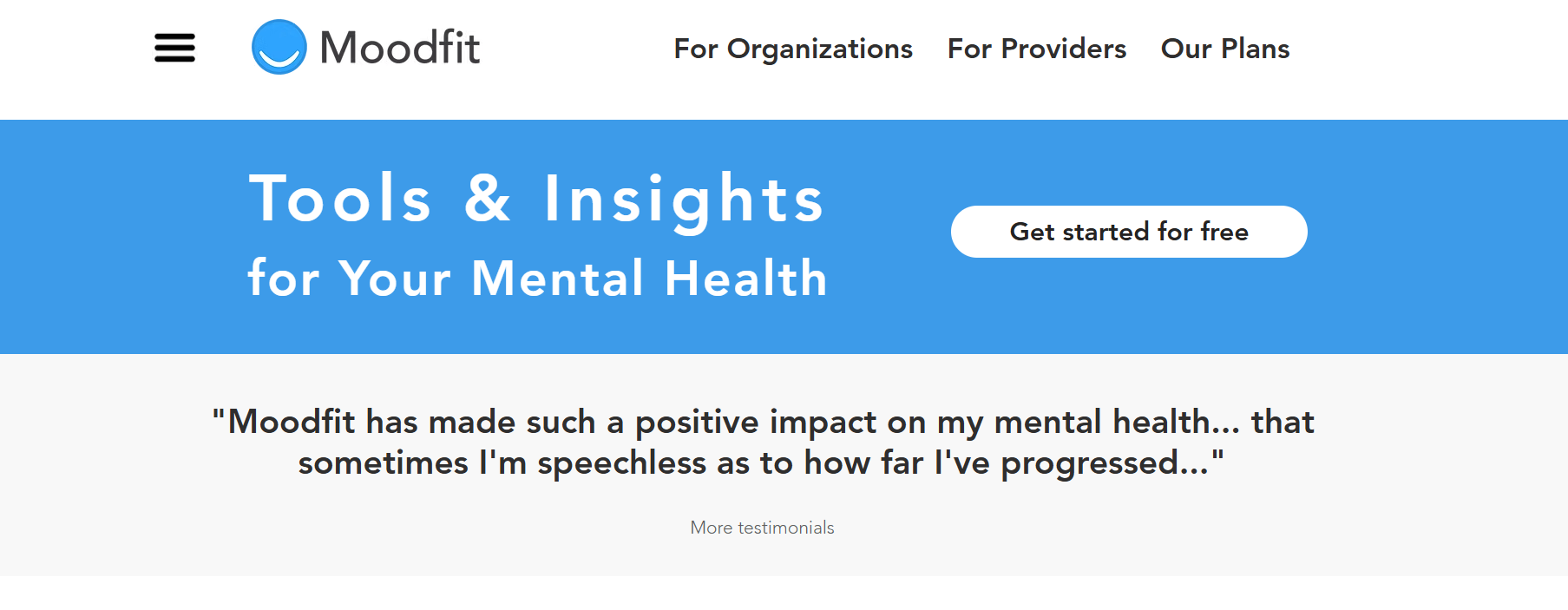
Moodfit is a comprehensive mental wellness tracker that combines mental health worksheets, journaling prompts, CBT-based challenges, and progress tracking. It lets users log their mood, sleep, exercise, and even gratitude.
Moodfit’s biggest strength is its personalization. It adapts recommendations based on user input and offers insights into what helps (or hurts) your mental state. It also includes breathing tools, guided meditations, and affirmation libraries.
Whether you’re new to mental health and fitness or managing ongoing conditions like depression or anxiety, Moodfit is a practical, user-friendly companion that turns self-care into daily action.
Mental Health Books Worth Reading
Books provide deep, uninterrupted reflection and can be transformative additions to your wellness toolkit. The following titles offer a combination of science, storytelling, and practical exercises to support mental health exercises in everyday life.
1. The Happiness Trap by Dr. Russ Harris
This book introduces Acceptance and Commitment Therapy (ACT), teaching readers how to break free from negative thinking and live more fully. It’s filled with hands-on tools, mindfulness exercises, and cognitive strategies to challenge mental ruts.
Dr. Harris explains how trying to avoid difficult emotions often leads to greater suffering, and how accepting and working with your thoughts and feelings can lead to lasting change. It’s particularly useful for people dealing with anxiety, burnout, or overthinking.
2. Lost Connections by Johann Hari
This thought-provoking book explores the societal roots of depression and anxiety, challenging the traditional medical model. Hari weaves together personal experience and interviews with experts to uncover nine causes of disconnection—from nature, meaningful work, and community.
Hari also presents powerful solutions, including mental health tips like rebuilding relationships, finding purpose, and engaging in community-based healing. It’s a compelling read for anyone who wants to explore mental health through a broader, more human lens.
Frequently Asked Questions
What are the best exercises for improving mental health?
The best mental health exercises are the ones you’ll consistently do. Top recommendations include mindfulness, physical activity, gratitude journaling, cognitive reframing, and deep breathing. These practices are supported by decades of psychological research and can be adapted to any lifestyle. For beginners, using mental health apps or mental health worksheets can offer helpful structure and accountability.
How can I reduce mental stress through daily habits?
Daily stress can be managed through small, intentional routines. Begin with five minutes of breathing or meditation, and mindfulness techniques in the morning. Take short nature walks or breaks between tasks. Reflect at night using a journal or worksheet. Drink enough water, fuel your brain with proper nutrition, and avoid excessive screen time. Mental health and fitness are about integrating care into your everyday flow.
What are 3 simple mental health practices anyone can do?
1. Gratitude journaling—List 3 things you’re thankful for every day.
2. Mindful breathing—Inhale and exhale slowly for one minute, focusing only on the breath.
3. Daily emotional check-in—Ask yourself, “How am I feeling?” and write down your answer.
These habits take less than 10 minutes and require no tools, making them ideal for all ages, from kids to adults.





